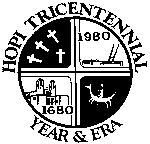History, Department of
Date of this Version
September 2008
Document Type
Book Chapter
Abstract
In March, 1981, Texas Tech University hosted a conference, “The Hopi Year: A Tricentennial Symposium,” and at that conference discussions centered upon a complex topic, the meaning of HOPI.1 The conference featured cultural interchanges among experts of both Hopi and non-Hopi origins, and this volume contains the substantive and visual presentations of this unusual gathering. The content is interdisciplinary and presented in the context of both historic and contemporary viewpoints. Also important is attention given to land-use patterns and to environmental systems of human and physical growth and survival as related to the arid regions of the Hopi Reservation. Perhaps most pertinent is the recognized fact that Hopis have existed on their same mesa-lands for over one thousand years. Hopis are the earth; Hopis live “in” the land, not “on” the land.
The make-up of the contributors is diverse: three artists from Second Mesa, spokesmen from the “Artist Hopid” group; a Hopi-Tewa potter from First Mesa; the Chief Judge of the Hopi Tribal Court, from both the Hopi Reservation and the state of California, and the Hopi Tribal Chairman (all of the above are of Hopi origins); an anthropologist from the University of Arizona; an archaeologist-artist- scientist from the Museum of Man, San Diego; and an historian from Arizona State University, (all non-Indian). In essence, the authors and artists present encompassed those knowledgeable in Hopi agriculture, anthropology, art, history, law, politics, philosophy, psychology, religion and sociology.
More specifically, the presentations covered a variety of subjects, such as: the Hopi people, legends and beliefs; migrations, ancient and contemporary practices of ritual and ceremony; the environment, farming and land usage, architecture, and village planning; spiritual strengths and associational relationships to nature forms; arts and crafts movements, historical and contemporary significances of symbol and meaning in the arts; tribal politics, land disputes, and contemporary tribal issues and possible solutions; an historical survey of the Hopi over a period of some four centuries; the Tricentennial celebrations, and prophecies for the future. During the conference and in this volume, rich visual references to Hopi original baskets, pottery, jewelry, paintings, kachina dolls, lithographs, and photographs were and are presented. Indeed, this book provides a composite portrait of the Hopi Nation.



Comments
Published in Hopi Nation: Essays on Indigenous Art, Culture, History, and Law, edited by Edna Glenn, John R. Wunder, Willard Hughes Rollings, and C. L. Martin (Lincoln, NE: UNL Digital Commons, 2008). Copyright © 2008 the Estate of Edna Glenn, Willard Hughes Rollings, Abbott Sekaquaptewa, Barton Wright, Michael Kabotie, Terrance Talaswaima, Alice Schlegel, Robert H. Ames, Peter Iverson, and John R. Wunder. All images and artwork are copyright by the individual artists; for a listing see pages 9-14.